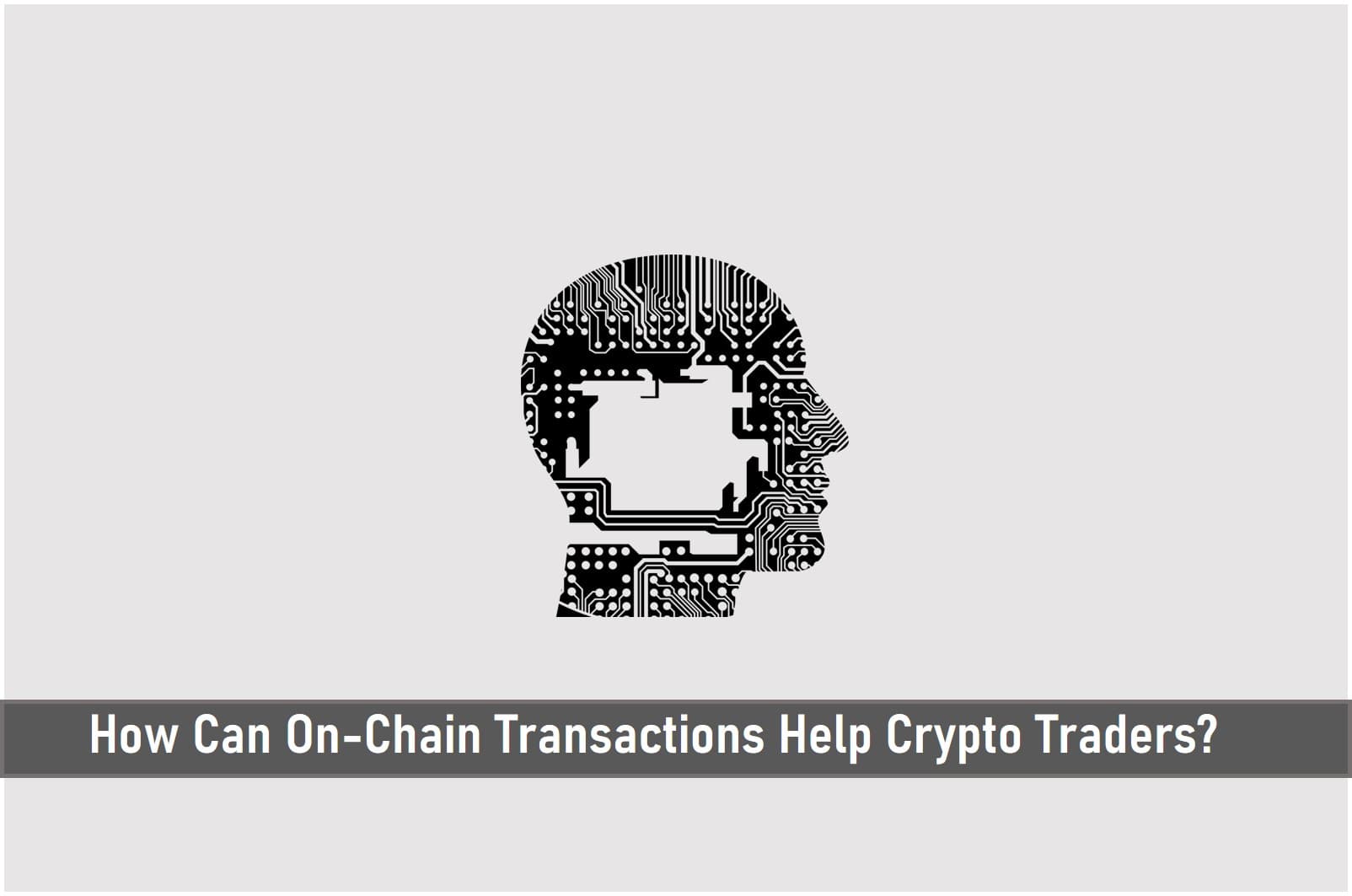
On-chain transactions simply refer to transactions that are recorded and verifiable on the blockchain network. On-chain transactions do not occur on the blockchain network but other electronic payment systems that support crypto payments such as PayPal.
On-chain transactions are just what crypto traders and investors need in the sense that they are consistent and unalterable. On-chain transactions further help to strengthen the blockchain network by preventing unauthorized access and modification.
With on-chain transactions, users can have more confidence in the blockchain network, spot fake transactions, trail unconfirmed transactions for resolution and ultimately strengthen the network.
How Can Users Spot Fake Blockchain Transactions?
In the blockchain, there is an on-chain volume which refers to the volume of cryptocurrency transactions that users move from outside an Exchange. The transactions are real and actually moved to prevent the hype of false transaction volume.
This, therefore, means that through on-chain analysis, the actual trading volume can be truly reconciled and confirmed through verification of fund inflows.
Key Takeaways
• Bitcoin uses the blockchain ledger to record all verified transactions and On-chain transaction confirms all transaction done and verified within the network.
• If the on-chain transaction volume is high or there’s congestion within the network, it may take longer for the miners to validate all of the transactions, particularly if there are a limited number of miners. As a result, the other parties involved in the transactions must wait for a resolution.
• At times, on-chain transaction fees can be high, depending upon the network’s scalability potential and transaction volume and these have led to the problem of Bitcoin Dust, where fractional amounts of bitcoins cannot be transacted.
SEE ALSO: Understanding On-chain and Off-chain Transactions
SEE ALSO: Crypto Dusting Attacks – How to Confirm Your Wallet is Affected
On-chain transactions refer to cryptocurrency transactions that occur on the blockchain and remain dependent on the state of the blockchain for their validity.
On-chain transactions are considered valid only when the blockchain has been updated to reflect the transactions on the public ledger. On-chain transactions offer security and transparency since they can’t be altered once they’re verified and recorded on the network.
However, there are some drawbacks to on-chain transactions, which include higher fees and slow processing times.
Understanding On-Chain Transactions
On-chain transactions are transactions that occur on a blockchain that is reflected on the distributed, public ledger. On-chain transactions are those that have been validated or authenticated and lead to an update to the overall blockchain network.
If the transaction volume is high or there’s congestion within the network, it may take longer for the miners to validate all of the transactions, particularly if there are a limited number of miners. As a result, the other parties involved in the transactions must wait for a resolution. However, participants may have the option to pay a transaction fee so that it can be validated sooner.

During the initial phase of a blockchain when the transaction volume is low, on-chain transactions may offer instant settlements. New network protocols and cryptocurrencies that are aimed at providing instant settlement are making their way into the mainstream.
Public Ledger
On-chain transactions are time-stamped and copied throughout the blockchain network, which provides transparency and security. On-chain transactions are also immutable, meaning they cannot be changed, which helps to bolster the security by preventing a hack in which transaction details could be altered.
On-chain transactions are shared with all participants in the network, providing transparency, which also helps prevent transactions from being altered by a fraudster through a malicious attack.
Although there are benefits to the distributed ledger of a blockchain network, public broadcasting and recording of on-chain transaction details may also provide sufficient pointers to link addresses to participants’ identities. As a result, the public sharing of the transaction could pose a threat to the anonymity feature of the blockchain and the security of its participants.
For instance, it is possible to partially know a user’s identity if one carefully studies the transaction patterns of sends and receipts around the same addresses, like those used for purchasing online goods.
SEE ALSO: Cryptojacking Attacks – Clever Ways to Detect and Prevent it
Cost of On-Chain Transactions
On-chain transactions also come at a cost, as miners command a fee for offering their validation and authentication services for confirming a transaction on the blockchain in the shortest possible time. At times, this fee can be high, depending upon the network’s scalability potential and transaction volume.
For instance, high fees have led to the problem of Bitcoin Dust, where fractional amounts of bitcoins cannot be transacted. However, for blockchain networks that are in their early stages of growth, when the transaction volume is low, their fees could be very small or zero.
What is On-chain Analysis?
Cryptocurrency is the first asset class where investor activity can be extracted from massive data sets through each crypto-assets public ledger, which captures every on-chain action in history.
Since blockchains are a treasure trove of open, incorruptible financial data, we can pinpoint measures of economic activity in these networks. Through the collection and study of this data, we can measure sentiment and investor behavior.
The on-chain analysis is a fundamentally driven approach rather than based on hype, sentiment, or technical analysis. This type of analysis can be focused exclusively on one crypto-asset by looking at historical trends or can be used to compare different crypto-assets to identify undervalued/overvalued coins.
We can think of the actual value of a cryptocurrency like bitcoin as made up of two parts: speculative value and utility value. An on-chain analysis is a vital tool that helps you separate the speculative value of a cryptocurrency from its utility value. By examining, for instance, user adoption and miner activity using blockchain data, we can see whether the current price is justified by the fundamentals.
Obtaining On-chain Data
The Do-It-Yourself approach is the best way to collect on-chain data for a cryptocurrency which means you have to run a node.
By running a node, you are storing and maintaining a copy of the ledger yourself, as well as ensuring that your transactions are broadcast, checking incoming transactions relayed by other nodes and that the consensus rules are being followed. This means you can query blockchain data faster than a third party from the console.
Analytical websites are an alternative for obtaining on-chain analytics. As the industry has matured, a host of data and analytics platforms have sprung up to serve cryptocurrency traders and investors. Often, machine learning is also used to identify different entities, such as miners or exchanges.
SEE ALSO: 3 Smart Ways the Police Can Crackdown Cryptocurrency Criminals
Frequently Asked Questions (FAQ)
1. What Happens if you Enable On-Chain Transactions?
On-chain transactions refer to transactions that are recorded and verified on the blockchain. On-chain transactions offer security and transparency since they can’t be altered once they’re verified and recorded on the blockchain network.
2. Can Crypto Transactions be reversed?
A Bitcoin user can’t reverse a Bitcoin transaction after confirmation. However, they can cancel a transaction if unconfirmed. Even the quickest network takes a minimum of 10 minutes to confirm a transaction.
3. Can I Reverse a Coinbase Transaction?
This means that once a payment is sent, there is no way for Coinbase to reverse the transaction or reclaim funds on your behalf. As a result, we are unable to resolve any payment disputes as the transactions are secured by the blockchain and are irreversible.
4. How does On-Chain Analysis Work?
An on-chain analysis is a fundamentally driven approach rather than based on hype, sentiment, or technical analysis. This type of analysis can be focused exclusively on one crypto-asset by looking at historical trends or can be used to compare different crypto-assets to identify undervalued/overvalued coins.
Final Thoughts
On-chain transactions help to prevent hacks due to their security. They are also shared with all participants in the network, providing transparency, which also helps prevent transactions from being altered by a fraudster through a malicious attack. This and many further shows why it is important to the blockchain network.
Read More




